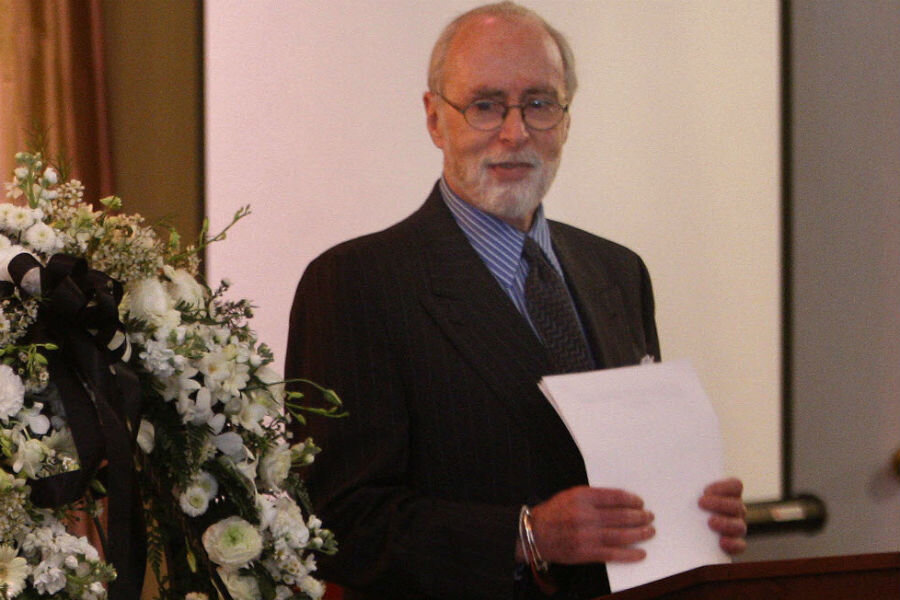Sydney Schanberg remembered for courageous coverage of Khmer Rouge
Loading...
Sydney Schanberg, a New York Times correspondent whose courageous coverage of Cambodia’s fall to the Khmer Rouge in 1975 earned him the Pulitzer Prize, and whose description of the narrow escape of his Cambodian reporting partner from the regime’s brutal rule inspired the 1984 film “The Killing Fields,” died Saturday in Poughkeepsie, N.Y.
Fiercely determined to document the harrowing, on-the-ground realities in Cambodia despite the risk to their own lives, Schanberg and his assistant, Dith Pran, continued to report from Phnom Penh during the Communist guerrilla takeover of the capital in the spring of 1975, when nearly all Western reporters and diplomats fled to safety.
"Sydney Schanberg was an historic and courageous correspondent," Dean Baquet, executive editor of the Times, said in a statement, according to the Associated Press. "He was part of a generation of war correspondents who made America understand what was truly happening in Vietnam and Cambodia."
By mid-April 1975, Schanberg was the only American reporter left in Phnom Penh, bearing witness to the massacres, fires, and the eerie emptying of the city as civilians were forced to march to the countryside to participate in a grim experiment with agrarian utopia.
Schanberg depended on his friend Mr. Dith to interview hospitalized victims of the Khmer Rouge terrorism and talk their way out of danger when the pair was captured by regime soldiers, but, as a Cambodian citizen, Dith wasn’t given Schanberg’s opportunity to escape by truck to Thailand when staying in the city became too dangerous. Dith was instead forced to join the mass exodus of civilians to the countryside.
Dith managed to escape to Thailand four years later, and Charles Kaiser, a colleague and friend of Schanberg, told Newsday that the reunion with Dith was a turning point in Schanberg's life.
“It was the miracle that really redeemed Sydney because until that time, he felt terrible every day of his life because he left behind his great friend in Cambodia and he hadn’t been able to save him,” Kaiser told Newsday. “He got a call that Dith was in some refugee camp, and Sydney flew off and that was really his redemption.”
Schanberg helped Dith get a job as a photographer at The New York Times and wrote “The Death and Life of Dith Pran,” which served as the basis for “The Killing Fields.” Haing Ngor, who won an Oscar for his portrayal of Dith's years of forced labor and near-starvation, had also survived the Cambodian genocide.
Schanberg began at The New York Times as a copy boy in 1959, and became a staff reporter the following year. During his 26 years at the Times, he served as foreign bureau chief in New Delhi and covered the 1971 war between India and Pakistan. In addition to the Pulitzer, Schanberg won two George Polk Memorial Awards for his international reporting.
“He was incredibly passionate about everything he did,” Kaiser told Newsday. “He was someone who really believed in afflicting the powerful and comforting the afflicted. That was really the soul of his work.”
Schanberg’s ten years as a political columnist for New York Newsday, after he left The Times, were marked by the same fearlessness and determination as his reporting as a globe-trotting war correspondent, his colleagues recall. He covered New York City housing issues, searching for root causes of the rise in homelessness, and helped teach emerging reporters his “shoe-leather reporting” style of asking strangers questions, both for the sake of a thorough story and to satisfy his own curiosity about humanity.
“He never accepted 'I don’t know' for an answer. He’d ask and ask and ask again until he was sure he understood the issues at hand,” Carolina Miranda wrote for the LA Times about her first boss and journalism teacher, Sydney Schanberg.








